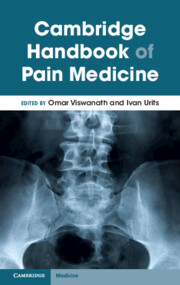Book contents
- Cambridge Handbook of Pain Medicine
- Cambridge Handbook of Pain Medicine
- Copyright page
- Contents
- Contributors
- Pain Handbook Introduction
- Part I Introduction to Pain: Pain Signaling Pathways
- Part II Common Categories of Pharmacologic Medications to Treat Chronic Pain
- Part III Chronic Pain Conditions Head and Neck
- Part IV Spine
- Part V Extremities
- Chapter 18 Carpal Tunnel Syndrome
- Chapter 19 Adhesive Capsulitis of the Shoulder
- Chapter 20 Thoracic Outlet Syndrome
- Chapter 21 Osteoarthritic Hip Pain
- Chapter 22 Osteoarthritic Knee Pain
- Chapter 23 Chronic Ankle and Foot Pain
- Chapter 24 Plantar Fasciitis
- Chapter 25 Phantom Limb Pain
- Part VI Misc
- Part VII Adjunctive Therapy
- Index
- References
Chapter 20 - Thoracic Outlet Syndrome
from Part V - Extremities
Published online by Cambridge University Press: 01 December 2023
- Cambridge Handbook of Pain Medicine
- Cambridge Handbook of Pain Medicine
- Copyright page
- Contents
- Contributors
- Pain Handbook Introduction
- Part I Introduction to Pain: Pain Signaling Pathways
- Part II Common Categories of Pharmacologic Medications to Treat Chronic Pain
- Part III Chronic Pain Conditions Head and Neck
- Part IV Spine
- Part V Extremities
- Chapter 18 Carpal Tunnel Syndrome
- Chapter 19 Adhesive Capsulitis of the Shoulder
- Chapter 20 Thoracic Outlet Syndrome
- Chapter 21 Osteoarthritic Hip Pain
- Chapter 22 Osteoarthritic Knee Pain
- Chapter 23 Chronic Ankle and Foot Pain
- Chapter 24 Plantar Fasciitis
- Chapter 25 Phantom Limb Pain
- Part VI Misc
- Part VII Adjunctive Therapy
- Index
- References
Summary
Thoracic outlet syndrome is a collection of conditions that lead to the compression of the nerves and blood vessels in the thoracic outlet area. Symptoms such as pain, numbness, weakness, and discoloration may occur depending on the specific structures affected. There is currently no agreed-upon diagnostic criteria, but a detailed patient history, physical examination, and appropriate imaging tests can help with diagnosis. The first-line treatment for thoracic outlet syndrome usually involves conservative measures like physical therapy, lifestyle changes, medications such as NSAIDs and injections like botulinum toxin A, steroids, and local anesthetics. If conservative treatments fail, surgical decompression may be considered. This chapter aims to provide a review of the epidemiology, causes, anatomy, symptoms, diagnosis, and treatment of thoracic outlet syndrome.
- Type
- Chapter
- Information
- Cambridge Handbook of Pain Medicine , pp. 157 - 163Publisher: Cambridge University PressPrint publication year: 2023

